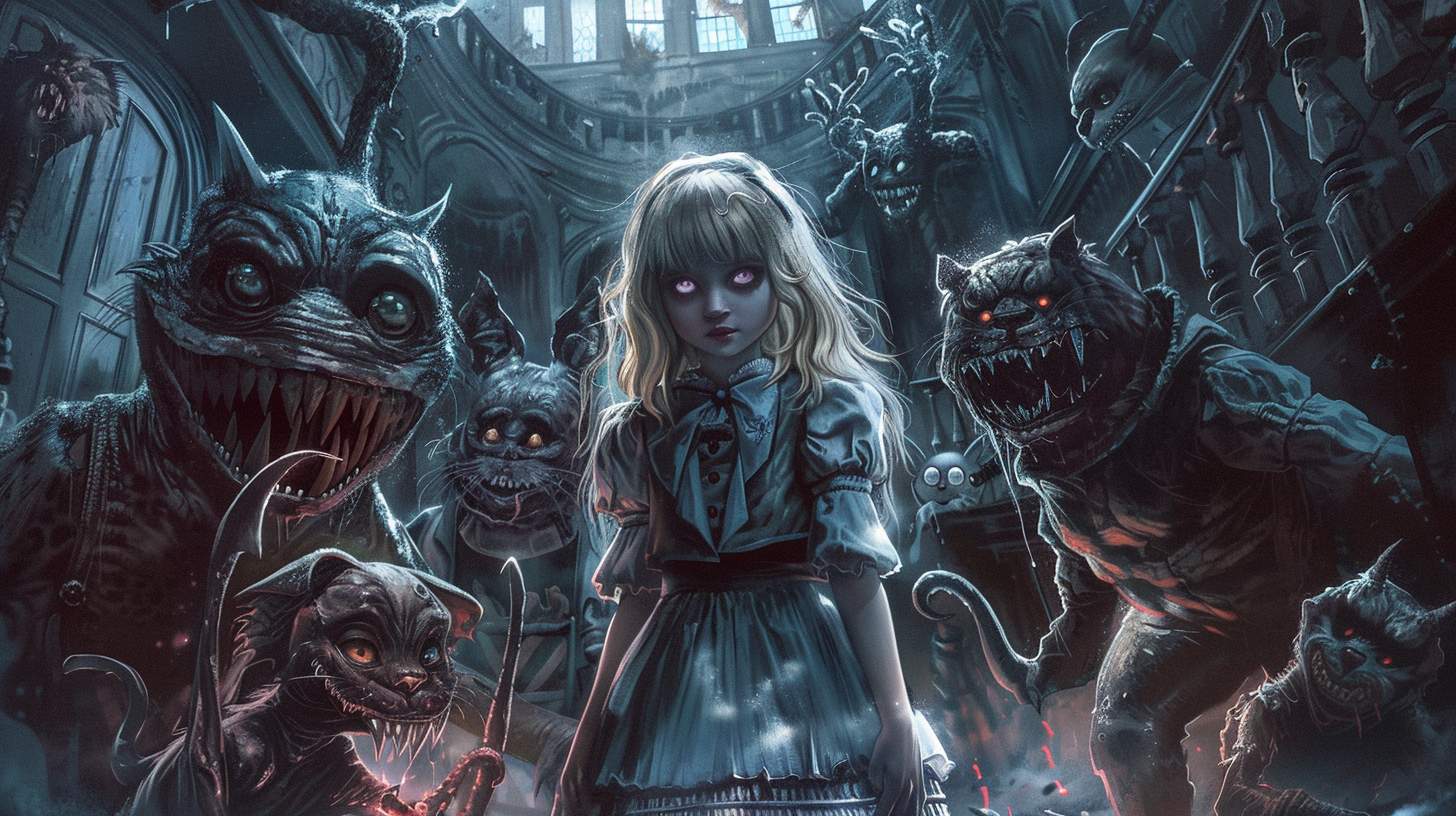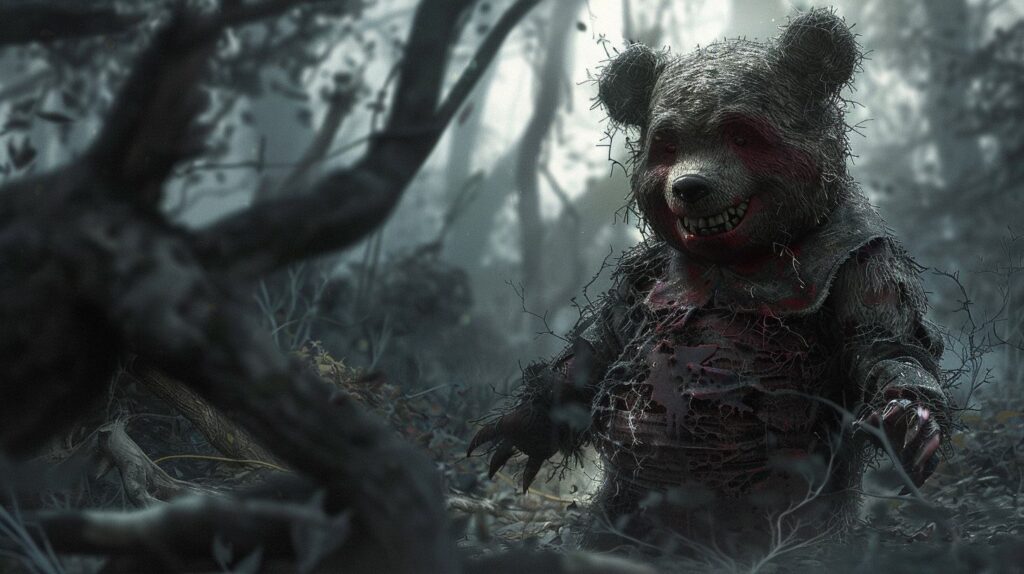Science
Rewriting Human History: Fire Was Sparked Hundreds of Thousands of Years Earlier
06 January 2026

Classic children’s literature often evokes nostalgic memories of early childhood. Works such as Lewis Carroll’s Alice in Wonderland, the Brothers Grimm’s fairy tales, or A.A. Milne’s Winnie-the-Pooh and their film adaptations have been companions to nearly everyone’s formative years. Simultaneously, they have become archetypes of popular culture and subjects of numerous remixes and reinterpretations, including horror films and pornographic adaptations. Does this global phenomenon of “adultifying” children's literature reveal something significant about our culture and how we perceive childhood today?
In a tragic accident, young Alice’s home is consumed by fire, claiming her parents’ lives. Traumatized by the loss, the girl descends into mental illness. She is committed to the Asylum – a 19th-century precursor to modern psychiatric hospitals – where she spends the next decade in near-total isolation, trapped in a state of deep catatonia. During this time, her mind continuously replays the trauma. In her fantasies, Alice traverses a degraded version of Wonderland, populated by nightmarish creatures. At the journey’s end, she must confront the Queen of Hearts, a symbolic representation of her illness. Only by triumphing over this demonic ruler can Alice break free from her endless nightmare.
This description is not of a horror film’s plot, but of the video game “American McGee’s Alice” (2000), a reinterpretation of Lewis Carroll’s classic novels Alice’s Adventures in Wonderland (1865) and Through the Looking-Glass (1871). These works are now firmly established in the canon of children’s literature classics. They are not only read but also reimagined by other creators who attempt to adapt the originals to the sensibilities and demands of adult audiences.
The phenomenon of “adultification” – the process of making children’s literature classics more adult-oriented – is not limited to Alice. The Land of Adulthood has also claimed other figures of collective imagination, such as Peter Pan and a certain lovable bear who recently starred in the widely criticized horror film “Winnie the Pooh: Blood and Honey.” In recent years, the issue of the (pop)cultural adultification of childhood has become the subject of numerous academic works that offer intriguing explanations for this phenomenon.
We recommend: The Werther Effect: It Is Enough to Talk About Suicide So That It Can Become a Considered Solution
In 2022, Maciej Skowera, a researcher of children’s, young adult, and popular literature at the University of Warsaw, published (Mytho)biographies and (Micro)histories: Carroll, Baum, Barrie. Skowera argues that classic children’s literature is an integral part of the Western cultural imaginary. Works like Alice in Wonderland or the Brothers Grimm’s fairy tales function as cultural artifacts so deeply rooted in our collective imagination that we can easily identify them without even knowing their original book versions. Skowera demonstrates that over the years, children’s literature classics have undergone numerous revisions and recontextualizations. Among these phenomena, he includes “adultification,” which he defines as:
“Using elements of the original work for young readers in a creation for adults, while simultaneously applying changes that oppose Western views on children and childhood; this includes eroticization/pornographication, brutalization, vulgarization of language, and […] linking the narrative with adult critical discourses.”
The researcher contrasts this phenomenon with infantilization — the simplification of classic works and the reduction of their original elements of horror and eroticism. Skowera argues that these strategies of culturally reworking children’s literature classics are inextricably linked to how we perceive childhood and adulthood. He posits that these categories are historically variable cultural constructs. Our perception of childhood today differs from that of our 17th-century ancestors, influenced by social, cultural, and economic factors. The contemporary understanding of childhood — as a special period of life in which a person should be isolated from broadly understood adult matters and primarily engage in learning and play — has its roots in the views of Jean-Jacques Rousseau and Romantic philosophy. However, this idealization of childhood and its association with goodness and innocence also has a dark reverse.

In recent decades, childhood has been a favorite motif of horror filmmakers. Classic films of this genre, such as Wolf Rilla’s “Village of the Damned,” Richard Donner’s “The Omen,” or Stanley Kubrick’s “The Shining,” have cemented an ambivalent image of childhood in the collective imagination of Western culture consumers. Child protagonists in horror films are frequently partially or completely demonic beings. Haunted by ghosts of the dead or diabolical entities, they experience a hidden side of reality inaccessible to their adult guardians. However, the perception of childhood in terms of evil and the uncanny is a phenomenon much older than 20th-century popular culture.
As Katarzyna Slany notes in Horror in Children’s Literature: From the Grimms to Gaiman, since ancient times, children have been considered ambivalent or demonic beings, functioning on the borderline between good and evil, sacred and profane. This view is confirmed in folk tales and superstitions passed down through generations, preserved in written form thanks to the efforts of 19th-century folklorists and “antiquity collectors.” These stories are now known as fairy tales, which we instinctively associate with literature intended for the youngest readers. However, their original versions were far from those we know from children’s books or Disney film adaptations. An example is one version of Little Red Riding Hood, cited by French anthropologist Robert Darnton in his essay “Peasants Tell Tales: The Meaning of Mother Goose.” In this version, the Wolf, disguised as the grandmother, does not devour Little Red Riding Hood but offers her the “meat and wine” of the previously killed old woman. Later, he persuades the girl to burn her cloak in the fireplace and lie naked beside him.
We recommend: Effective Methods of Prevention. How to Protect Children from Addiction?
The cannibalistic themes and eroticization of the child protagonist are shocking from a contemporary reader’s perspective. However, it is important to remember that the folk precursors of fairy tales were not addressed exclusively to a child audience. They were also intended for adults, and these frightening stories served not only as entertainment but also helped to come to terms with the fear of death and the cruelty of the world. As Slany observes, the horror of original fairy tales was also an integral part of the folk pedagogy of fear – raising children through intimidation. The researcher argues that this educational method, still popular in the 19th century, gave rise to a rich gallery of “child-eaters” such as Baba Yaga, the devil, the wolf, or the vampire, which migrated from folk tales into popular culture.
As early as the 19th century, original versions of fairy tales were subject to censorship by publishers or folklorists themselves, who believed these stories – due to their simplified worldview and dominance of fantastical elements – were originally intended for child audiences. Their efforts led to the infantilization of folk tales, which now exist in simplified versions adapted to the sensibilities of the youngest readers. These versions simultaneously reflect contemporary perceptions of childhood. They demonstrate our desire to protect the youngest from the horror and brutality of the world at all costs. We refuse to allow discomforting truths about reality to reach them, even through literary or cinematic fiction. Psychologists argue, however, that such an approach is not beneficial for a child’s psyche.
In his seminal work The Uses of Enchantment: The Meaning and Importance of Fairy Tales, Bruno Bettelheimn – an American psychologist and educator – argued that children should be read frightening stories. Through these, young people can confront their fears, process them within the realm of fiction, and come to terms with the idea that the world is not exclusively a pleasant and friendly place. It seems that today we have forgotten this pedagogical function of fear.
The adultification of fairy tales and children’s literature classics by contemporary culture is not merely an element of postmodern play with tradition or nostalgia for a lost “land of childhood.” The popularity of dark reinterpretations of children’s fiction also seems to suggest that only as adults do we fully perceive the complexity and ambiguity of the literary originals. Their re-reading also highlights Western culture’s tendency to taboo certain aspects of childhood. Content repressed from collective consciousness — such as a child’s disturbing fascination with evil and cruelty — is now returning in subversive pop-cultural narratives. Thus, the forgotten and unsettling side of childhood is shown in modern movies, television shows, and video games.
Translation: Klaudia Tarasiewicz
Polish version: Alicja w Krainie Koszmarów. Książki dla dzieci są… dla dorosłych
Science
06 January 2026



Zmień tryb na ciemny